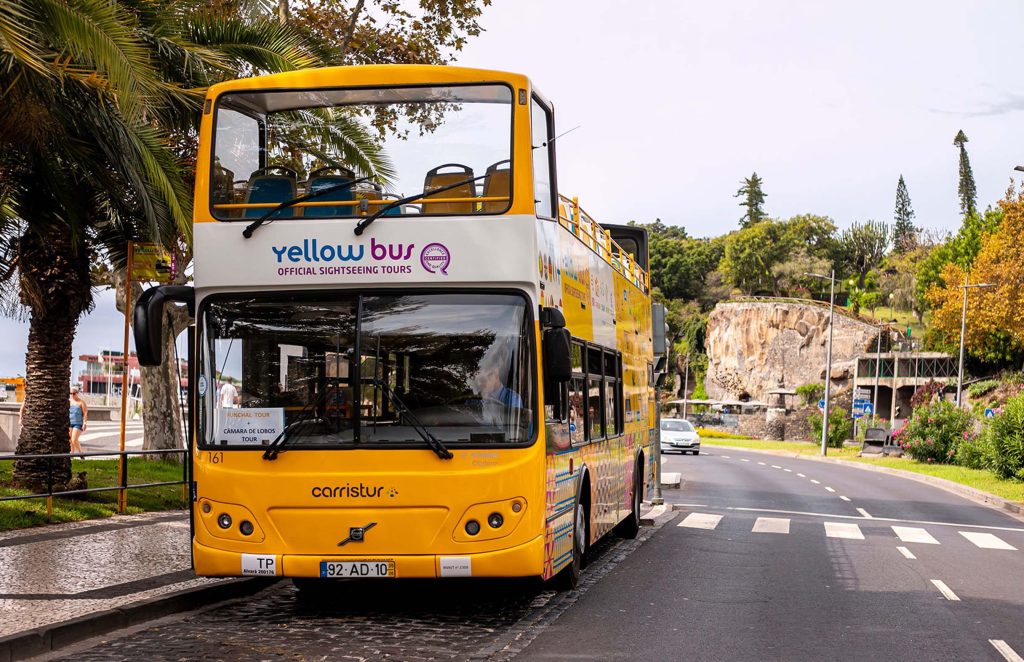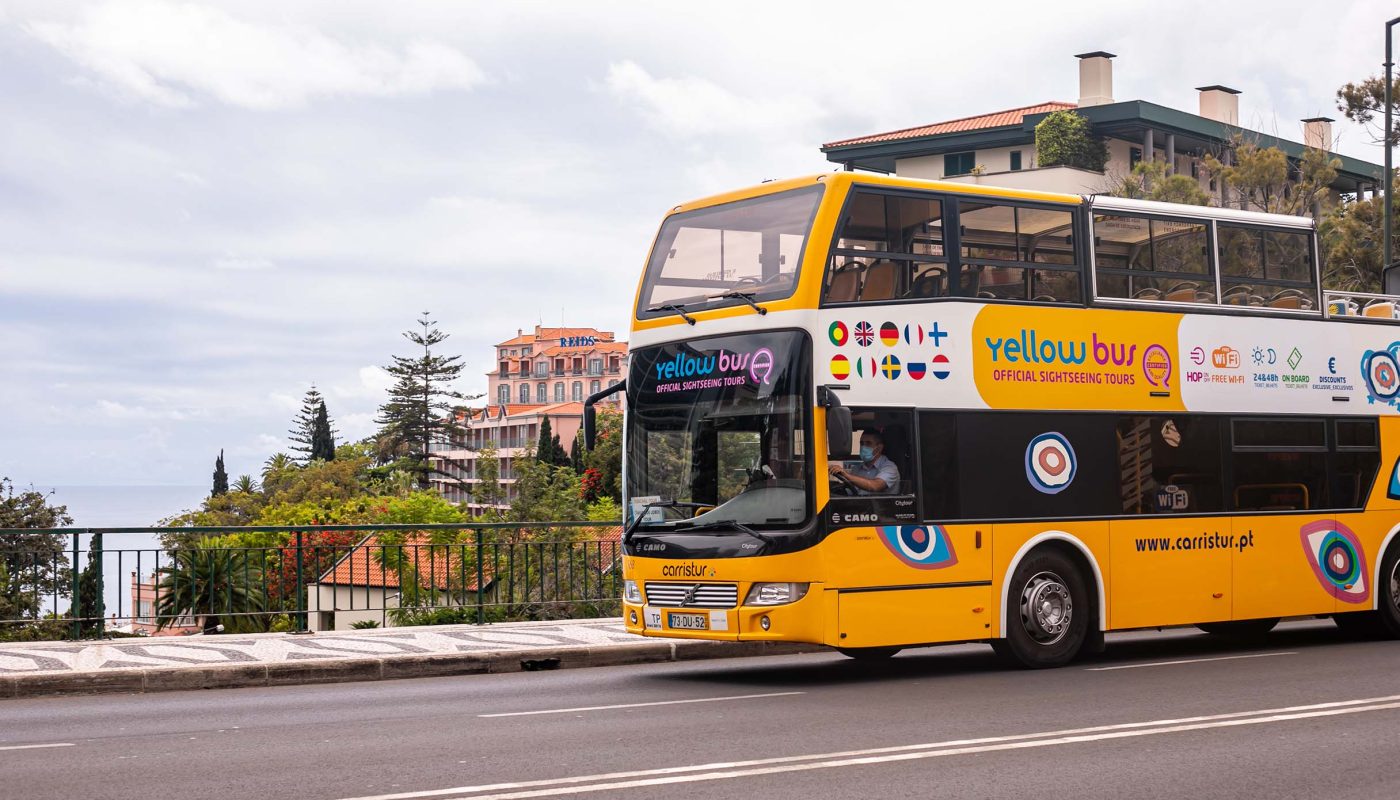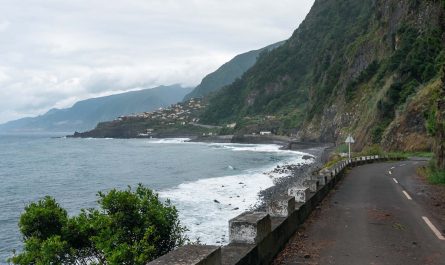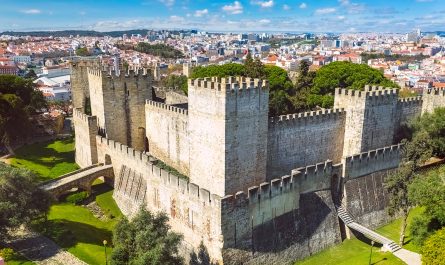When I first arrived in Madeira, I quickly realized that getting around the island required a bit of planning, but once I got the hang of it, I was able to travel like a local. Madeira’s public transport system is reliable, affordable, and can take you to many parts of the island, from its bustling capital, Funchal, to the remote, scenic villages tucked away in the mountains. In this guide, I’ll share my experiences and tips on how to use public transport effectively in Madeira, as well as some key insights into exploring the island using buses, cable cars, and even ferries.
Give Your Tech a Second Life
Give your devices a second life with Gazelle.com
Sell your old tech or buy certified pre-owned phones and laptops — saving money while reducing e-waste.
Smart for you. Good for the planet.
Getting Started: Understanding Madeira’s Public Transport System
Madeira’s public transport system primarily revolves around buses. The island’s mountainous terrain means that train services are non-existent, so buses are the main mode of transport for locals and tourists alike. There are several bus companies that operate in different regions of the island, and getting familiar with their routes and timetables is crucial if you want to travel efficiently.
Major Bus Companies
- Horários do Funchal (HF) – This is the largest and most important bus company on the island, primarily operating within Funchal and nearby towns. They offer both local routes (urban) and interurban routes that take you to some of the more distant parts of Madeira.
- Rodoeste – If you plan to explore the western part of the island, Rodoeste buses will be your go-to. They cover routes that include Câmara de Lobos, Ribeira Brava, and all the way to Porto Moniz.
- SAM (Sociedade de Automóveis da Madeira) – SAM buses cover the eastern side of the island, including the towns of Machico, Caniçal, and Santa Cruz, as well as the area around the airport.
- EACL (Empresa de Automóveis do Caniço) – EACL primarily covers the Caniço area, a popular region for tourists and locals alike due to its proximity to Funchal.
During my time in Madeira, I mostly used Horários do Funchal buses to get around Funchal and beyond, but I also ventured out on Rodoeste buses for day trips to explore the western side of the island.
How to Use the Buses
Using the buses in Madeira is relatively straightforward once you get the hang of it. Here’s what you need to know:

- Tickets and Fares
You can buy bus tickets directly from the driver, but I quickly learned that it’s much more convenient (and cheaper) to buy a prepaid Giro card if you’re planning to stay in Funchal for a few days. This card can be topped up and used on Horários do Funchal buses. The fares are significantly lower than paying in cash, and it saves you the hassle of having to carry exact change for each journey.
For longer journeys outside of Funchal, especially with Rodoeste and SAM buses, you can also purchase tickets from the driver or at bus stations. The fares vary depending on the distance, but even the longest routes are affordable, typically ranging between €3 and €10 depending on how far you’re traveling.
- Timetables and Routes
While the buses are reliable, it’s important to check timetables in advance, as some routes, especially those heading to more remote areas, may not run frequently. For example, buses to popular tourist spots like Cabo Girão or Porto Moniz might only run a few times a day. I recommend downloading the Horários do Funchal app, which I found incredibly useful for checking real-time schedules and routes. You can also find timetables at bus stops, but having the app made it much easier to plan my day trips. - Getting Around Funchal
Funchal, the island’s capital, is where you’ll likely spend a lot of time, and the city’s public transport system is well-connected. I often used the yellow city buses operated by Horários do Funchal to get to popular attractions such as the Botanical Gardens and the Monte Palace. The city buses run frequently, and the prepaid Giro card made hopping on and off buses effortless.
My Top Tips for Traveling by Bus
- Plan Your Journey in Advance: Some buses, especially those heading to rural parts of the island, only run a few times a day. I learned this the hard way when I missed the last bus back from Porto Moniz and had to wait for hours! It’s always a good idea to double-check the return bus schedule before setting off on a day trip.
- Sit on the Right Side: If you’re taking a bus along the coast, sit on the right-hand side of the bus for the best views of the ocean. This small tip made a big difference, especially when traveling along the scenic route between Funchal and Câmara de Lobos.
- Be Ready for Curves: Madeira is mountainous, and the roads are full of sharp bends and steep inclines. If you’re prone to motion sickness, consider sitting near the front of the bus and bringing along some medication just in case.
Cable Cars: A Unique Way to Travel
One of the most unique forms of public transport in Madeira is the cable car system. While not as essential for getting around as the buses, the cable cars offer stunning views and are a must-try experience for any visitor.
Funchal Cable Car (Teleférico do Funchal)
The most popular cable car in Madeira runs from the old town of Funchal up to the picturesque village of Monte. This 15-minute ride offers breathtaking views of Funchal’s rooftops, the surrounding mountains, and the shimmering Atlantic Ocean. I took this cable car early in the morning to beat the crowds, and it was worth every penny.
- Ticket Price: A one-way ticket costs around €12.50, while a return ticket is €18.
- How to Get There: The lower station is located in Funchal’s old town, which is easily accessible by bus or on foot.
- Tips: Sit near the window for the best views. If you’re planning to visit the Monte Palace or the Botanical Gardens, this is the most scenic and convenient way to get there.
Achadas da Cruz Cable Car
This lesser-known cable car, located on the northwestern side of the island, was one of the highlights of my trip. It connects the tiny village of Achadas da Cruz with a remote farming area by the sea. The views during the descent are absolutely breathtaking, and it felt like a hidden gem far away from the tourist crowds.
- Ticket Price: Just €3 for a round trip.
- How to Get There: It’s best to take a bus or rent a car to reach Achadas da Cruz, as it’s a bit off the beaten path.
- Tips: If you’re looking for adventure, combine the cable car ride with a hike along the nearby trails.
Taxis and Ride-Sharing
While buses are the main form of public transport, taxis and ride-sharing services are also available in Madeira. Taxis are plentiful in Funchal and other major towns, and they’re convenient for shorter trips or for getting to places that are less accessible by bus.

How to Use Taxis
Taxis in Madeira are usually painted cream and are easy to spot. I found the drivers to be friendly and knowledgeable, often offering tips on the best places to visit. However, it’s important to agree on a fare before starting your journey, especially if you’re heading outside of Funchal. Most taxis also have meters, so be sure the driver uses it.
Uber and Bolt
Ride-sharing apps like Uber and Bolt have recently become available in Madeira, mainly in Funchal and the surrounding areas. I used Uber a couple of times for late-night trips when the buses had stopped running, and it was just as convenient as in any major city.
Renting a Car: Exploring Madeira’s Remote Corners
Although public transport in Madeira is quite efficient, there are some remote areas that are best explored by car. Renting a car gave me the freedom to visit the island’s hidden gems, like the Laurisilva Forest, which is hard to reach by bus.
- Driving in Madeira: The roads in Madeira can be challenging, with steep inclines and sharp curves. If you’re not confident driving on narrow mountain roads, it might be best to stick to buses and taxis.
- Car Rental Tips: I recommend booking a car rental in advance, especially during peak tourist season. Most rental companies have offices at the airport, making it easy to pick up a car as soon as you arrive.
Ferries: Island Hopping to Porto Santo
For those looking to explore beyond Madeira, a ferry service runs between Funchal and the neighboring island of Porto Santo. This small, sandy island is perfect for a day trip or a weekend getaway, and the ferry ride itself is an enjoyable experience, offering stunning views of the ocean and Madeira’s rugged coastline.
- Ferry Schedule: The ferry to Porto Santo operates daily, with the journey taking around 2 hours and 15 minutes.
- Ticket Price: Prices vary depending on the season, but you can expect to pay around €60 for a round-trip ticket.
- Tips: Book your tickets in advance, especially during summer months when Porto Santo becomes a popular destination for both locals and tourists.
Traveling around Madeira using public transport is an excellent way to experience the island like a local. Whether you’re hopping on a bus to a remote village, taking a scenic cable car ride, or catching a ferry to a nearby island, the island’s public transport system offers convenience, affordability, and a sense of adventure.



